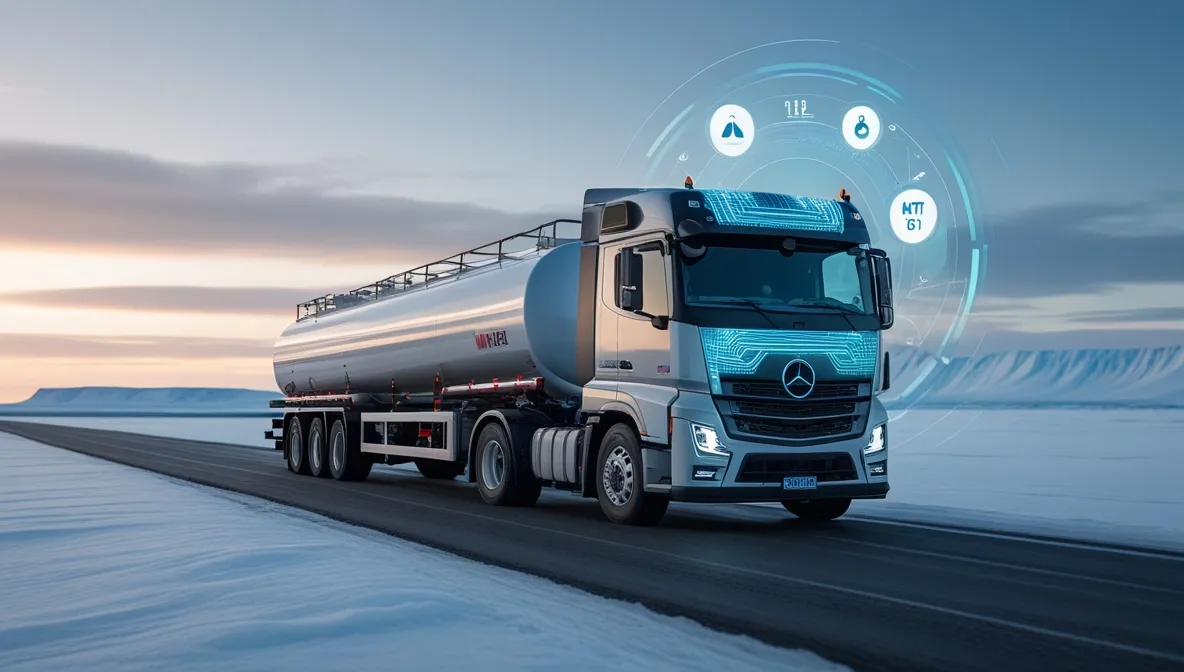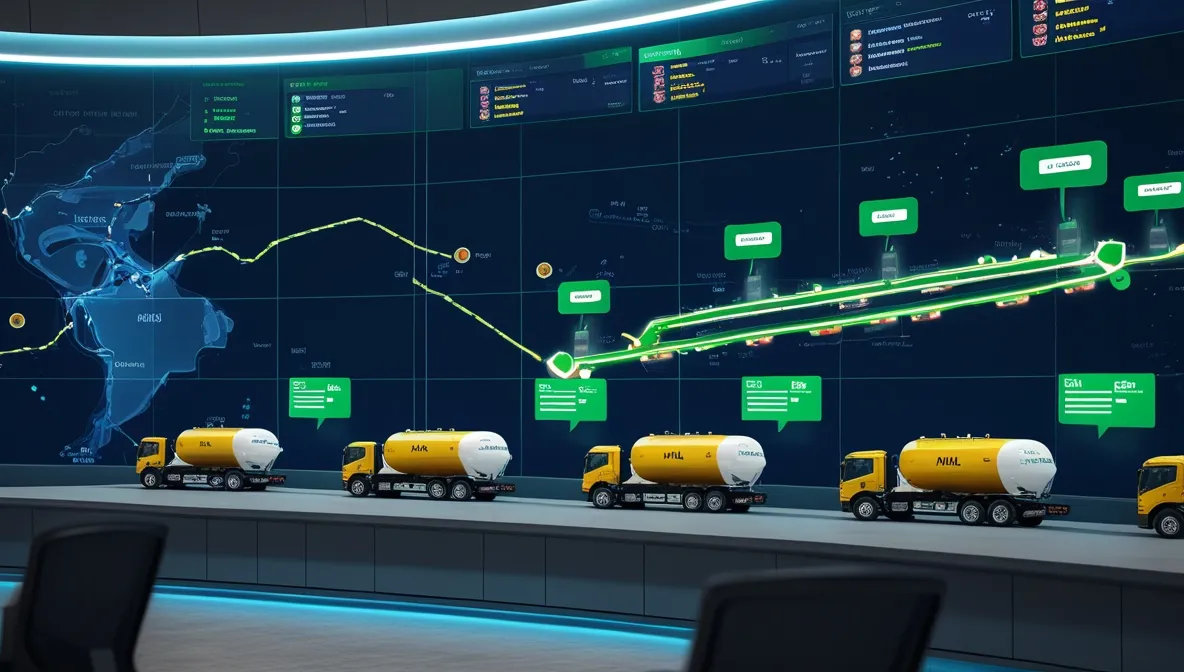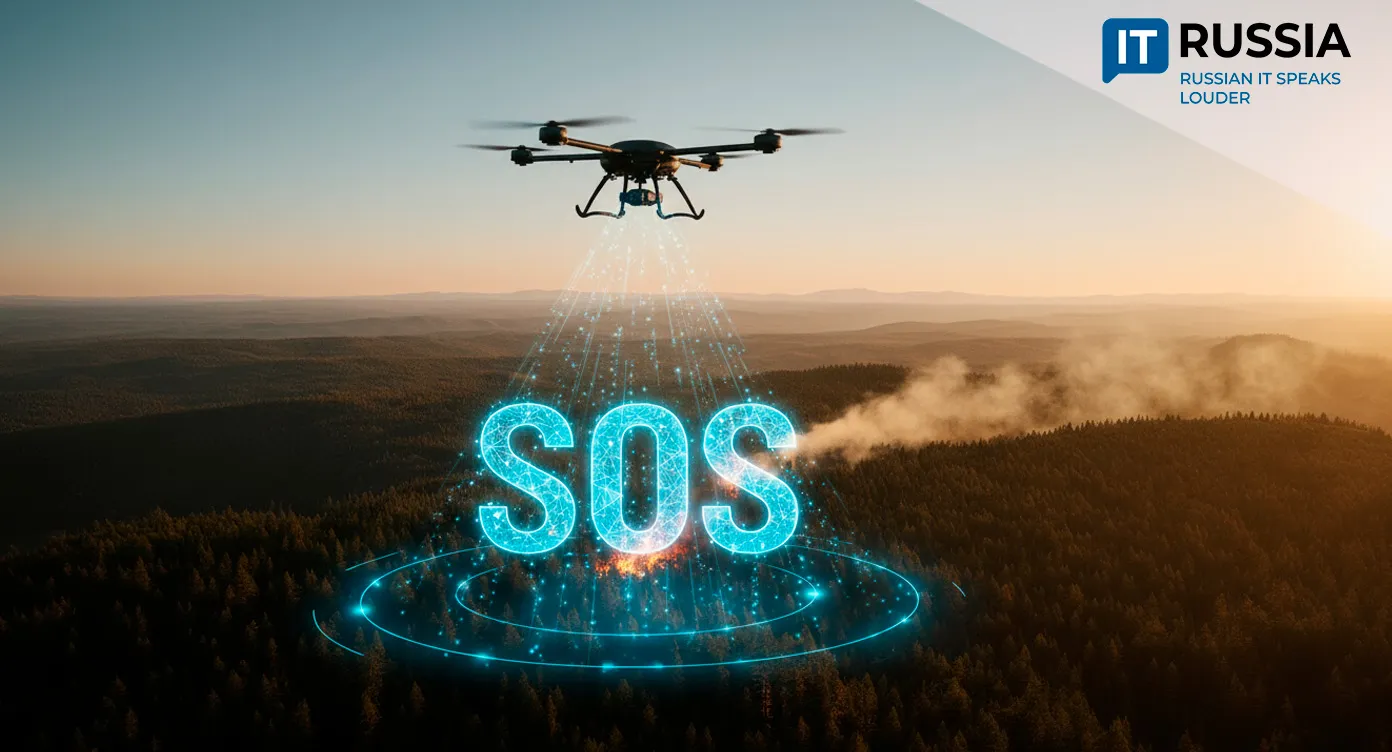MTS Digitizes Gas Transport Fleet in Northern Russia
MTS has launched a large-scale initiative to digitize gas transport trucks in northern Russia, equipping them with intelligent monitoring systems that significantly improve the safety and efficiency of hazardous cargo transportation across multiple regions.

Safety Comes First
Every day, hazardous materials such as liquefied gas and petroleum products are transported across Russia — operations that demand exceptional safety standards. To address this, logistics operators are increasingly adopting smart vehicle systems that enhance operational control and reduce risks.
Recently, telecom giant MTS announced that it has implemented an intelligent monitoring system for the specialized transport fleet of AllianceGas, a logistics company operating in the Yamalo-Nenets Autonomous District, Tyumen Region, and Khanty-Mansi Autonomous District.

By the end of the year, eight gas carriers will be fully equipped with the system. This digital upgrade aims not only to boost transport safety but also to optimize logistics between industrial facilities and refueling stations.
Real-Time Fleet Monitoring
The new monitoring system represents a major shift in how gas transport fleets are managed. Equipped with a network of intelligent sensors, the solution provides real-time data on each vehicle — including location, route, and distance traveled. Unlike traditional GPS trackers, the MTS system offers proactive safety features, issuing early warnings about potential collision risks and other hazardous situations.
All collected data is visualized through an online dashboard and interactive reports, allowing operators to adjust routes and manage fleets more efficiently. This digital tool improves driver discipline, reduces fuel consumption, and enhances response times during unexpected events. “Process automation is an essential part of modern business efficiency.
Deploying domestic technology allows us to minimize downtime, improve safety, and ensure timely fuel delivery,” said Valentina Bilan, CEO of AllianceGas. “Since the system’s installation, we’ve already seen a marked improvement in driver performance, and we plan to expand the MTS solution to our entire fleet.”

Expanding Adoption Across the North
AllianceGas is not the only company using MTS monitoring systems. These technologies are gaining popularity among businesses across northern Russia, particularly those operating far from their headquarters and production sites.
In fact, Russia’s nationwide transport monitoring efforts date back to 2012, when the Federal Transport Oversight Agency (Rostransnadzor) initiated the creation of an integrated analytical system based on the GLONASS satellite network. That system collects and analyzes vehicle movement data for hazardous cargo throughout the country, supported by eight regional data centers and automated control points in all federal districts.

Nationwide and Global Potential
The MTS digital monitoring system has significant potential for expansion beyond gas carriers. It can be applied to any type of vehicle transporting hazardous goods and could eventually be integrated with federal transport safety systems and emergency response networks. Future upgrades may also extend the technology to rail and maritime transport.
Internationally, MTS solutions could prove valuable in countries that face similar logistical challenges with long-distance hazardous cargo transport. By deploying advanced digital control technologies in remote regions, MTS sets an example of how telecom innovation can directly contribute to public safety, industrial efficiency, and regional digitalization.
In the long run, the project lays the groundwork for deeper automation across the logistics sector, reducing the need for constant human oversight.










































